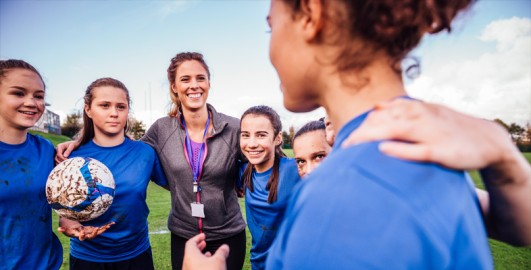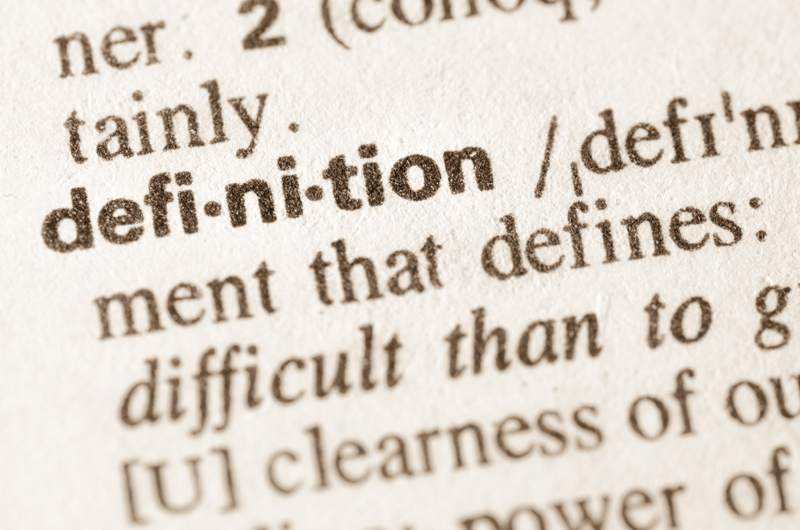1 Defining key terms
Before you explore this topic in more detail, a quick note about terminology throughout this course. Firstly, the term ‘athlete’ is used in a broad way to describe any participant of any age and ability engaging in a range of sport and exercise activities. Secondly, the term coaching is used to refer to any scenario where an individual is working with a participant in a sport and exercise setting. Thirdly, you will see the use of ‘condition first’ rather than ‘person first’ descriptions of neurodivergence. This includes phrasing such as an ‘autistic person’ as opposed to a ‘person with autism’. There are different ideas on which approach is most useful, with varied approaches being adopted in different countries.
As this course is written in the UK, by UK-based authors, the condition first approach is adopted throughout. This reflects the lived experience of neurodivergent people in the UK, and how they feel their condition is an important part of them and their identity – hence ‘autistic person’. However, it also important to note that some people do prefer person first phrasing. As many elements of this course will highlight, this reflects the need for person-centred approaches and can often mean asking individuals how they prefer to be addressed.
Neurodiversity is by its very definition diverse in nature, covering a range of brain functioning. Neurodivergent conditions include ADHD, autism, dyspraxia and dyslexia among others, and the term ‘neurotypical’ is often used to describe what the majority of a population may experience. The first activity introduces you to these terms and explores them further.
Activity 1 Matching exercise on key terms
1. Below are six terms frequently used within the topic of neurodiversity. Are you already aware of any of these terms? If so, note down their meaning for any that you are able. If not, do not worry and move on to question 2.
ADHD
2. Now visit the Neurodiverse Sport website and use their Glossary page [Tip: hold Ctrl and click a link to open it in a new tab. (Hide tip)] to check your understanding by completing the drag and drop activity below, matching key terms to their definitions.
Using the following two lists, match each numbered item with the correct letter.
-
ADHD
-
Autism
-
Dyslexia
-
Neurodiversity
-
Neurodivergent
-
Neurotypical
Match each of the previous list items with an item from the following list:
a.ADHD: Attention Deficit Hyperactivity Disorder (ADHD) is a neurodevelopmental condition characterised by differences in attention and regulation of impulses which can impact on daily tasks.
b.This term describes differences in neurological development which we see across a whole population of people, often viewed as natural variation.
c.This is a difference in learning which impacts how someone reads, writes and/or spells.
d.This term describes an individual whose neurodevelopment is considered typical and within an accepted range.
e.This term describes an individual whose neurodevelopment is not considered typical. This is often accompanied by a diagnosed condition.
f.Sometimes known as Autism Spectrum Disorder, this is a condition which displays different patterns in communication, behaviour and other social interactions.
- 1 = a,
- 2 = f,
- 3 = c,
- 4 = b,
- 5 = e,
- 6 = d
Discussion
Some of these terms may be new to you, and some may be terms you have heard of or are quite used to. This activity only touches on some of the language used to describe neurodiverse experiences in wider society as well as sport and you may have noticed that a key thread running between them is how individualised these terms can be. How one athlete experiences, manages or communicates about a neurodivergent condition can be very different to another athlete. This means as a coach you cannot for example assume how one person experiences their autism is the same as the next person, so it is important to be open to individualised experiences of this and therefore adjust any coaching approaches accordingly.
The definitions included on the Neurodiverse Sport website also include strengths, which will be explored throughout this course. You may wish to make a note of this webpage as it will be useful to return to if you need to reinforce your understanding of these key terms.
This course will help you consider the importance of acknowledging how neurodiversity impacts athletes in coaching environments and explore how coaches can make their practice and environments supportive of neurodivergence. You will now look in more detail at different models of diversity and how this impacts the ways neurodiversity is viewed and talked about in wider society.

